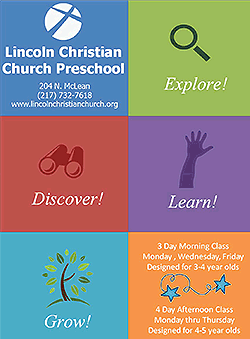|
 Sparks provides change
management consultation services and works in partnership with
clients throughout the Memorial Health System to facilitate
continuous learning and targeted interventions and to address health
systems goals and strategies. She provides Change and Mindfulness
classes through the Leadership Development Institute along with
teaching Yoga and Meditation classes. Sparks provides change
management consultation services and works in partnership with
clients throughout the Memorial Health System to facilitate
continuous learning and targeted interventions and to address health
systems goals and strategies. She provides Change and Mindfulness
classes through the Leadership Development Institute along with
teaching Yoga and Meditation classes.
Sparks said we are inspired by the busy lives we lead, but asked,
“How can we be mindful?” Her objective was to get everyone to learn
how to practice mindfulness and personal resilience by learning what
resilience and mindfulness are, how stress affects us, what
mindfulness is and how we can achieve it. She wanted participants to
learn a practice of mindfulness that works for their own lives.

Sparks said we have many stresses in our lives such as work, kids,
spouses, money, and lack of time.

Sparks said resilience
comes from the word resilire, which means “to rebound or bounce
back.” Resilience is “the ability of an individual to positively
adjust to adversity” or “the ability to recover from adversity,
uncertainty, or failure of overwhelming changes.” She said
resiliency implies that we are bouncing back from something that is
not easy.

Sparks asked whether
pressure and stress are one and the same. She said being under
pressure can cause us to feel stressed. Pressure is usually about
external factors and stress has to do with how we take all the
external events, internalize them and process them. Stress is a
choice we make.

We can become aware of pressure in our lives that turns into stress
by becoming aware of how we allow the process to happen and how we
are internalizing those events. As Charles Swindoll said, “Life is
10 percent what happens to you and 90 percent how you react to it.”
How we react to stimuli is how we internalize stress.

Sparks said just as
cows chew their cud over and over, we repeatedly worry about what
has already happened, worry about the past, and ruminate about what
is to come. Rumination is thinking over and over and about something
which happened and attaching negative emotions to it. To break the
cycle, we can tap into our stressors.

Sparks said mindfulness
is a tool to help us break the cycle. Mindfulness is not a religion,
cultural belief system, or ideology. It is not just about taking
deep breaths. Mindfulness is simply “being focused in the present
moment” and managing our attention in that moment.

Jon Kabat-Sinn said,
“Mindfulness means paying attention in a particular day; on purpose,
in the present moment, and non-judgmentally.” Sparks broke down this
statement.
[to top of second column] |

Sparks said when
something is on purpose, “we mean to do it,” and 'non-judgmentally'
is about “trying to avoid judging our thoughts.”
Many of us judge ourselves, but Sparks said we need to suspend and
release judgment that really does not serve us. It is a great tool
for resiliency.

Sparks said mindfulness
is a tool to help improve wellness along every dimension of the
wellness wheel, which includes environmental, intellectual, social,
physical, spiritual, occupational, and emotional wellness.
Sparks said the brain has evolved and we rarely need to use the
reptilian function today. Modern day humans do not often have to use
the fight or flight response. In the fight or flight space, we do
not have the ability to be mindful and process what is going on in a
rational way. Our emotional brain reacts to stresses and if we stay
there, we do not get to rational thought. Our pre-frontal cortex
helps us be compassionate with others and ourselves, but also helps
us regulate emotion and self-awareness.


Research tells us when
we are mindful on a regular basis, we can change how our brain
works. The more we are mindful, the more our gray matter in our
brains increases. Mindfulness practices can help us bring awareness
to the processes of thinking.
Sparks said the intent of mindfulness practice is to create “space”
so you can “see your thoughts and emotions with more clarity and
without judgment.”

Sparks asked the
audience to close their eyes and focus on their body and then on
breathing. She had everyone take a “purposeful pause,” which is a
few minutes to be mindful and pay attention with intention.
Sparks said there are many ways to make mindfulness a daily
practice. Focusing on a cup of coffee and taking a walk are just a
couple of ways. The practice helps to create “space” and breathing
room in our day and can help us in our interactions with our
families and at work. It helps redirect attention to what is
important.

Sparks said there are circles of influence and circles of concern.
In the circle of influence, we look at what we can change. In the
circle of concern are many things we cannot change. We need to look
at what is outside the circle of influence and recognize that many
worries are things we cannot change, and we should let go of them.
Sparks said when implementing mindfulness, we should consider
barriers like time and try to find a natural time it could work.
Look for opportunities to carve out even two minutes a day for
practicing mindfulness. Figure out when you can benefit from a
purposeful pause to give you more peace in your day and consider
when you need more time to be mindful.
The ladies went away from this session with many helpful tips for
reducing stress and worry.
[Angela Reiners] |